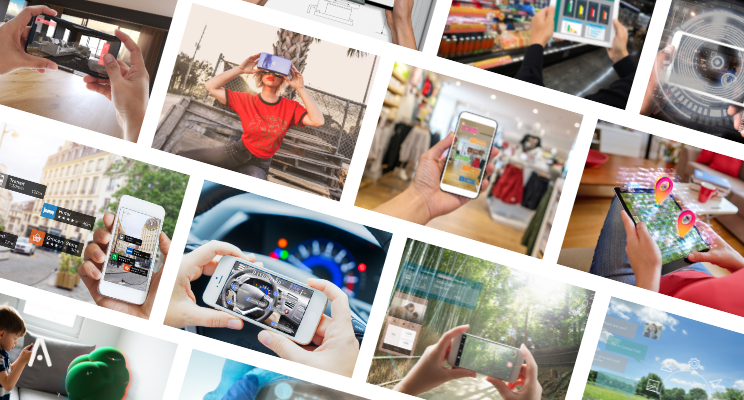Our Augmented World

By: Varun Tikku – WAVIT Copywriter
Augmenting Our Markets
Augmented Reality (AR) and Virtual Reality (VR) involve adding visual and auditory cues to enhance or alter the physical world we inhabit. The industries have been experiencing explosive growth in response to the pandemic, the worldwide market is valued at $26.75 billion in 2021, with forecasts predicting an increase to $340.16 billion by 2028.
Over 2020, North America dominated the market, accounting for 35% of revenue due to their multitude of technology companies, causing them to lead in the adoption and deployment of new technology. The Middle Eastern markets are also expected to grow substantially, as AR solutions are being used increasingly in oil and gas, as the governments of Saudi Arabia and the UAE are emphasising the importance of AR. The Saudi oil conglomerate Aramco has signed a collaboration with US based Magic Leap, one of the largest AR companies in the world whose technology has already been extremely effective in a plethora of sectors during COVID. The same US based company has also worked with Citibank in the UAE to create an AR game in which the purpose is to crack the code of a vault by doing a dummy transaction to showcase the ease of use.
Augmenting Our Connections
Research shows that the most impactful drivers for younger generations are entertainment and education, 81.5% of the satisfaction in AR mobile advertising was impacted by these highly influential motives.
Escapism is the most impactful driver for older generations, yet far less so for younger generations as they may require a higher level of stimulation to promote escapism in AR advertising, 60.8% of all ages felt a positive association with a shared social experience through escapism. Hence, it is of the utmost importance that unique and creative elements are incorporated into AR advertisements to promote escapism among younger consumers so that people of all ages can benefit from the interconnected feeling of our shared social experience.
Augmenting Our Products
AR campaigns have been exponentially successful since Volkswagen created a 2D image of a Mini Cooper that would turn into a 3D image on a computer webcam in 2008. This was one of the first campaigns that allowed interaction with a digital model in real time, while it was extremely simple compared to what we have today, it piqued brands’ interest which led to the development of far more advanced technology.
The fashion industry has been keenly following the progress of AR since the 2010s where virtual ‘try it on’ campaigns were especially popular, even Apple had a try it on smart watch back when they were all the craze. This trend has developed into not only trying on fashion products in the virtual world, but also purchasing these items in the real world at the same time.
L’Oreal released ‘Modiface’ on Amazon, where users could try on makeup virtually, rather than going into a store which is usually a time consuming endeavour. The notable success of ‘Modiface’ resulted in Amazon launching their own budget beauty brand; ‘Belei’ in 2019. Of course, Amazon did not stop there, they went on to develop Amazon Salon, which was not only created to change hair styles and colours in a virtual environment. Their further goal was to test out their ‘Point and Learn’ technology. This new technology is meant to give customers detailed information and brand videos related to each product they view in the virtual space, all of which have QR codes that can be scanned for simple and instant payment.
Augmenting Our Future
This is likely to be the future of purchasing in Eastern countries such as the UAE who expect AR and VR to account for a $4.1 billion influx by 2030. A YouGov survey of 17 markets determined that Asia, the UAE and Mexico have far greater interest in AR shopping than Western Europe and the US. Despite the effects of COVID pushing people towards online shopping, brick and mortar stores still hold sway over consumers in the UAE as 55% still preferred to buy clothes at physical stores. The augmented shopping experience will be the perfect marriage of virtual and physical for Middle Eastern consumers and will likely spark more of a global interest as the technology develops.
AR and VR are going to augment our future in a myriad of manners, across most countries. This new technology is already being applied and improved across a variety of fields, from IKEA’s AR room designing application, to John’s Hopkins performing its first AR surgery. AR solutions are certain to shift the content landscape as they provide a new platform with endless opportunities to engage with our audiences with techniques we have already learnt in the physical world.

 Ask Us Anything!
Ask Us Anything!